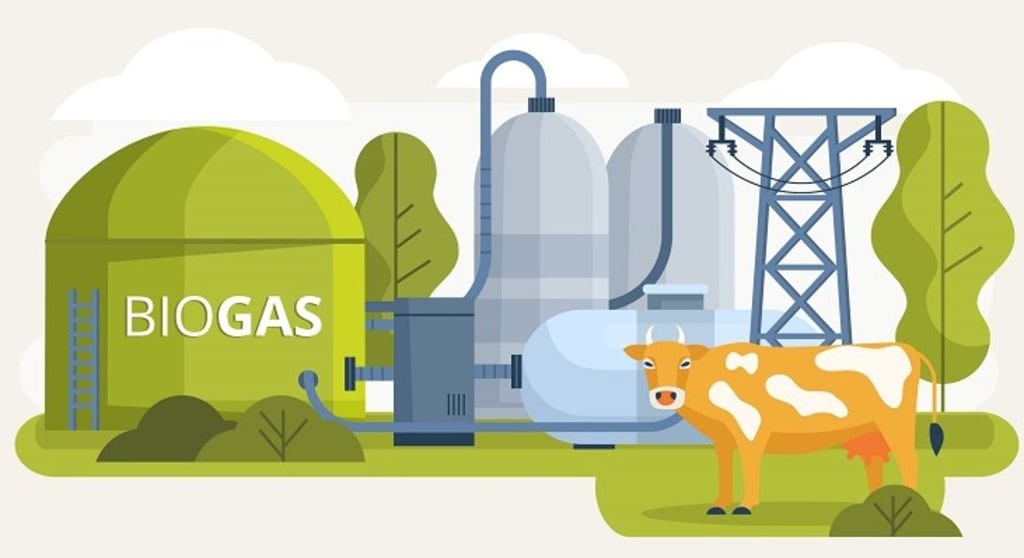Organic Biogas Market - Current Insight with Future Aspect Analysis
Organic Biogas Market Expected to Reach $19.7 Billion by 2031

Biogas is an environmentally friendly and renewable energy source. It is produced when organic matter, such as food or animal waste, is broken down by microorganisms in the absence of oxygen, in a process called anaerobic digestion. It occurs naturally anywhere from within the digestive system to the depth of effluent ponds and can be reproduced artificially in engineered containers called digesters. Animal manure, food waste, wastewater, and sewage are examples of organic matter that can generate biogas through anaerobic digestion. Owing to the high methane content, biogas is flammable, and therefore produces a deep blue flame and can be used as an energy source. Biogas, also known as renewable natural gas, is “renewable” in the sense that humans and animals keep producing waste. It is commonly used in rural areas as cooking gas. It can be used to produce electricity. It can be used in instruments used for water heating, room heating, and it can replace compressed natural gas for use in vehicles.
The growth of the organic biogas market is expected to be driven by rising in environmental awareness and an increase in supply concerns related to the utilization of fossil fuels. Furthermore, rapid infrastructure development and a rise in energy demand from commercial & industrial sectors have boosted the construction of biogas production plants. In addition, the implementation of stringent pollution regulations, an increase in understanding of environmental conservation, rise in concern related to economic sustainability in every sector have led to the utilization of organic waste to produce biogas, which is further utilized in the power generation and transportation sector for various purposes.
The organic biogas market has certain restraints. These include the release of harmful compounds and air contaminants, such as CO into the environment during organic production that is expected to lead to a decline in the market share in coming years. The risk associated with soil and water contamination in the process of anaerobic digestion in the landfill industry is high. High capital investment in setting up biogas production plants and technology implementation are hampering the organic biogas market growth.
China has the highest number of biogas plants among the IEA bioenergy with more than 100,000 biogas plants. It is one of the first countries to develop and utilize biogas. The main feedstocks used in biogas production in China are kitchen (food) waste, livestock waste (manures and slurries), and energy crops. There is a big move underway to promote the use of yellow straw as a feedstock. In contrast to the European industry, roughly two-thirds of the economic value of biogas plants in China comes from organic fertilizer, with one-third from energy production. While there are thousands of small biogas plants scattered around the country, the central government is now promoting larger-scale deployment, particularly of agricultural plants, to promote renewable energy growth and improve water and air quality.
Germany is the largest biogas fuel producer and more than 10,000 biogas plants operated in 2020. Half of the European continent’s methanisers are in Germany. Currently, 80% of the organic matter used in the biogas industry in Germany comes from plants grown exclusively for this purpose, according to the German Environment Agency.
The organic biogas market forecast is segmented on the basis of source, application, and region. By source, the market is fragmented into poultry & livestock, agriculture waste, landfill gas, and others. Landfill gas segment is further classified into electricity, direct use, combined heat and power, and alternate fuels. Direct use segment is further categorized into boilers, direct thermal & leachate evaporation, and others. In addition, by application, the market is segregated into power generation, cooking, combined heat & power, and clean mobility. Region-wise, the market is studied across North America, Europe, Asia-Pacific, and LAMEA. Presently, Europe accounts for the largest organic biogs market share, followed by North America, Asia-Pacific, and LAMEA.
The landfill gas segment dominates the global organic biogas market. Landfills for municipal solid waste are a source of biogas. Biogas is produced naturally by anaerobic bacteria in municipal solid waste landfills and is called landfill gas. Landfill gas with a high methane content can be dangerous to people and the environment as methane is flammable. Landfill gas contains many different gases. Methane and carbon dioxide makes up 90 to 98% of landfill gas.
The power generation segment dominates the global organic biogas market. Biogas is turned into electricity using a combustion engine, fuel cell, or gas turbine, with the resulting electricity being used on-site or sold onto the electric grid. A cubic meter of biogas contains the equivalent of 6kWh of heat energy. The same volume of biogas converted to electrical power yields 2kWh, the rest of the energy is dispersed as heat that can be reclaimed and applied to other uses.
Europe segment dominated the global organic biogas market. The Europe organic biogas market is anticipated to witness significant growth during the forecast period. This is attributed to increase in the installation of biogas plants due to the ongoing transition to a sustainable and circular economy as well as an increase in focus on cost-effective waste management strategies. Furthermore, the introduction of national regulations and EU Directives toward renewable energy utilization is anticipated to act as a key driving force in the European market.
Get a PDF brochure for Industrial Insights and Business Intelligence @ https://www.alliedmarketresearch.com/request-sample/32062
Key findings of the study
• As per organic biogas market analysis, by region, the Asia-Pacific organic biogas market is projected to grow at the highest CAGR of nearly 7.1% during the organic biogas market forecast period.
• On the basis of source, the landfill gas segment garnered the highest share in 2021.
• By application, the power generation segment acquired the largest organic biogas market share in 2021.
Impact of Covid-19 on the Global Organic Biogas Market
The outbreak of the pandemic has created an enormous awareness among the people related to safeguarding the environment. It provided an opportunity to diversify the economy away from oil and boost agriculture and support transportation that is environmentally friendly. Post-pandemic, there is a huge demand for the organic biogas market mostly due to an increase in awareness among the people regarding the importance of the environment and the presence of huge organic waste resources which can be used as raw materials to produce biogas which is used in the power generation and as a fuel for the transportation vehicles. In addition, the government policies and investment of the government toward the generation of biofuel and hydrogen to power future environment-friendly vehicles are projected to provide lucrative organic biogas market opportunities.
Competitive Landscape
The major companies profiled in this report include Air Liquide, Atlas Copco, Biofrigas Sweden AB, CarboTech, DGE GmbH, DMT Environmental Technology, Dreyer & Bosse (Wolf GmbH), EnviTec, Guild Associates Inc., and Xebec Adsorption. Owing to an increase in the demand for eco-friendly and the presence of abundant raw materials such as organic waste, deteriorating levels of petroleum reservoirs, increased awareness about the technical expertise related to the conversion process among the industrialists, and growth of the transportation sector in developing countries, such as India and China, drive the organic biogas market. The above-mentioned factors will have a positive impact on the demand for the organic biogas market. Further, growth strategies such as an expansion of storage capacities, acquisition, partnership, and research & innovation in the optimization and improvement in the efficiency of the conversion of waste to biogas have led to attaining key developments in the global organic biogas market trends.
For instance, in November 2021, Xebec Acquires Colorado-based UECompression to Establish North America’s Leading Renewable Natural Gas and Hydrogen Manufacturing Facility. This acquisition will increase the market share of biogas in North America region. Additionally, in March 2022, EnviTec based in Lohne and Saerbeck, Germany. The biogas all-rounder is currently constructing four biogas projects in the United States, with six other biogas projects also now already at the planning stage for 2022. The presence of this investment will increase the biogas market share of the company






Comments
There are no comments for this story
Be the first to respond and start the conversation.